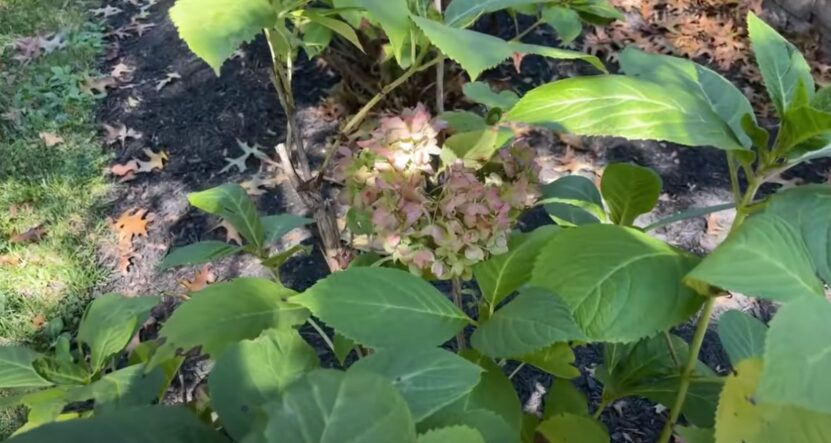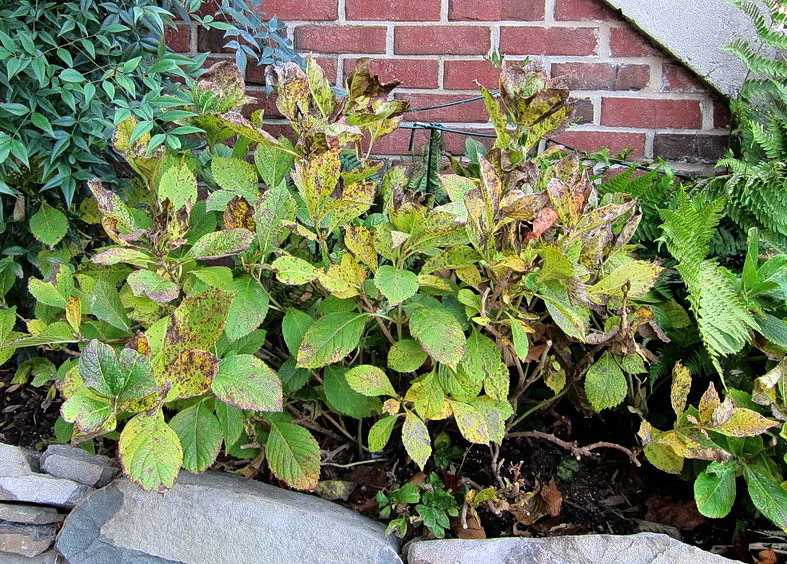Facts About Hydrangea Leaves Turning Yellow Uncovered
Wiki Article
How Hydrangea Leaves Turning Yellow can Save You Time, Stress, and Money.
Table of ContentsAll about Hydrangea Leaves Turning YellowHydrangea Leaves Turning Yellow Things To Know Before You BuyThe Hydrangea Leaves Turning Yellow DiariesSome Known Questions About Hydrangea Leaves Turning Yellow.The 6-Second Trick For Hydrangea Leaves Turning YellowThe Of Hydrangea Leaves Turning Yellow
One possibility is that the plant is not getting enough sunshine. Throughout the cold weather, the days are much shorter, and the sunlight is not as extreme, so make certain to put your Hydrangea in a spot where it will get at the very least 6 hours of sunshine every day. One more reason for Hydrangea yellow leaves in winter season could be way too much water.The leaves could be transforming yellow due to temperature tension. Hydrangeas like cooler temperatures, so if the plant is in a spot that obtains as well hot or too cool, the fallen leaves will turn yellow. If you think temperature level stress and anxiety may be the problem, try moving your Hydrangea to a different location or protecting it from the components with a burlap cover.

The Best Strategy To Use For Hydrangea Leaves Turning Yellow
In the spring when the mercury stays reasonably low, they'll do fine. When points warm up over the summer season however, time spent in the very early afternoon rays can trigger unknown damage.: Expand your hydrangeas in a place where they'll get sunlight in the early mornings or evenings, however not throughout the peak hours.Wilting is triggered by absence of moisture, indicating there are a couple of good techniques to make use of to prevent this from taking place - Hydrangea Leaves Turning Yellow. Give your hydrangeas a healthy glug of water every couple of days when the temperature levels are climbing high, and treat the soil to far better retain wetness. After sprinkling, a bit of compost around the base of each plant should assist with this by maintaining dampness in the dirt

3 Simple Techniques For Hydrangea Leaves Turning Yellow
As a basic rule of thumb, we recommend removing leaves when they are 50% brown or higher. While browning triggered by any type of reason can't be reversed, taking the corrective activity defined above will certainly urge the plant to expand new leaves so the damaged leaves either diminish naturally or can be removed by the gardener.Hydrangeas must be watered only when the top few inches of dirt are completely dry, and must be provided a thorough soaking each time. Underwatered hydrangeas are most likely to have yellow, wilting, and sagging fallen leaves. Enhance the frequency and amount of sprinkling for your hedge to assist address this problem. Hydrangeas like relatively damp (but not soaked) dirt, so provide the roots a good soaking and permit water to be soaked up right into the soil before applying more.
The method you take care of hydrangea leaves turning yellow depends upon the key issue creating the yellow fallen leaves. This can be tough important source to figure out, once you do you will certainly have the ability to change your plant treatment accordingly to look after the problem. Hydrangea Leaves Turning Yellow. As discussed before, a typical problem with hydrangeas is vitamins and mineral deficiencies
10 Easy Facts About Hydrangea Leaves Turning Yellow Described
Throughout the peak expanding season, you should water at a price of about 1 inch weekly. If you are stressed over not appropriately watering your hydrangeas, there are a couple of things you can do. Including compost to the base of the plants over the root zone help to control the temperature around the hedge and keep water in the dirt.Additionally, you can acquire and set up basic watering globes. Watering globes hold water in them and slowly release this water into the dirt as the ground becomes completely dry. Merely load the world with water, stick the spout into the soil within the root area near the base of the plant, check my site and leave it in position until all the water is gone.
If it is too severe, some plants will never ever recoup from transplant shock and will remain to decrease till they pass away. Reduce transplant shock by consisting of as many roots as possible when digging up your plant to relocate it. Be certain to supply more water than normal in the weeks complying with planting to aid your plant recover and expand new origins.
Not known Facts About Hydrangea Leaves Turning Yellow

To prevent spreading out fungal diseases, make sure to thouroughly tidy and decontaminate any pruning tools before and after usage. You can try to purge the roots with water to remove excess fertlizer.
Your hydrangea plant favors well-drained, moist soil. If the pot has inadequate drainage, or your dirt is flooded, the leaves will begin to transform yellow. Overwatering makes the soil soggy. Flooded and soggy soil can result in stunted development, fallen leave discoloration, and, worst of all, rot fungal conditions. Despite the fact that over-watering can be damaging, under-watering is not an option either.
If you do not sprinkle your hydrangea plant for more than a week, the fallen leaves will start transforming yellow. Fungal diseases that attack the plants often tend to show join the roots and the fallen leaves of the plant. Among these diseases is origin rot, that makes it challenging for the plant pop over to this site to feed appropriately.
The Main Principles Of Hydrangea Leaves Turning Yellow
Origin rot occurs when microorganisms occupy the root cells as hosts and stop the cell from operating. If not taken treatment of, this disease can eventually lead to the plant dying. Leaf place is another fungal disease that can target hydrangea. It results in the fallen leaves turning yellow and the appearance of brown and purple areas on the fallen leaves.Report this wiki page